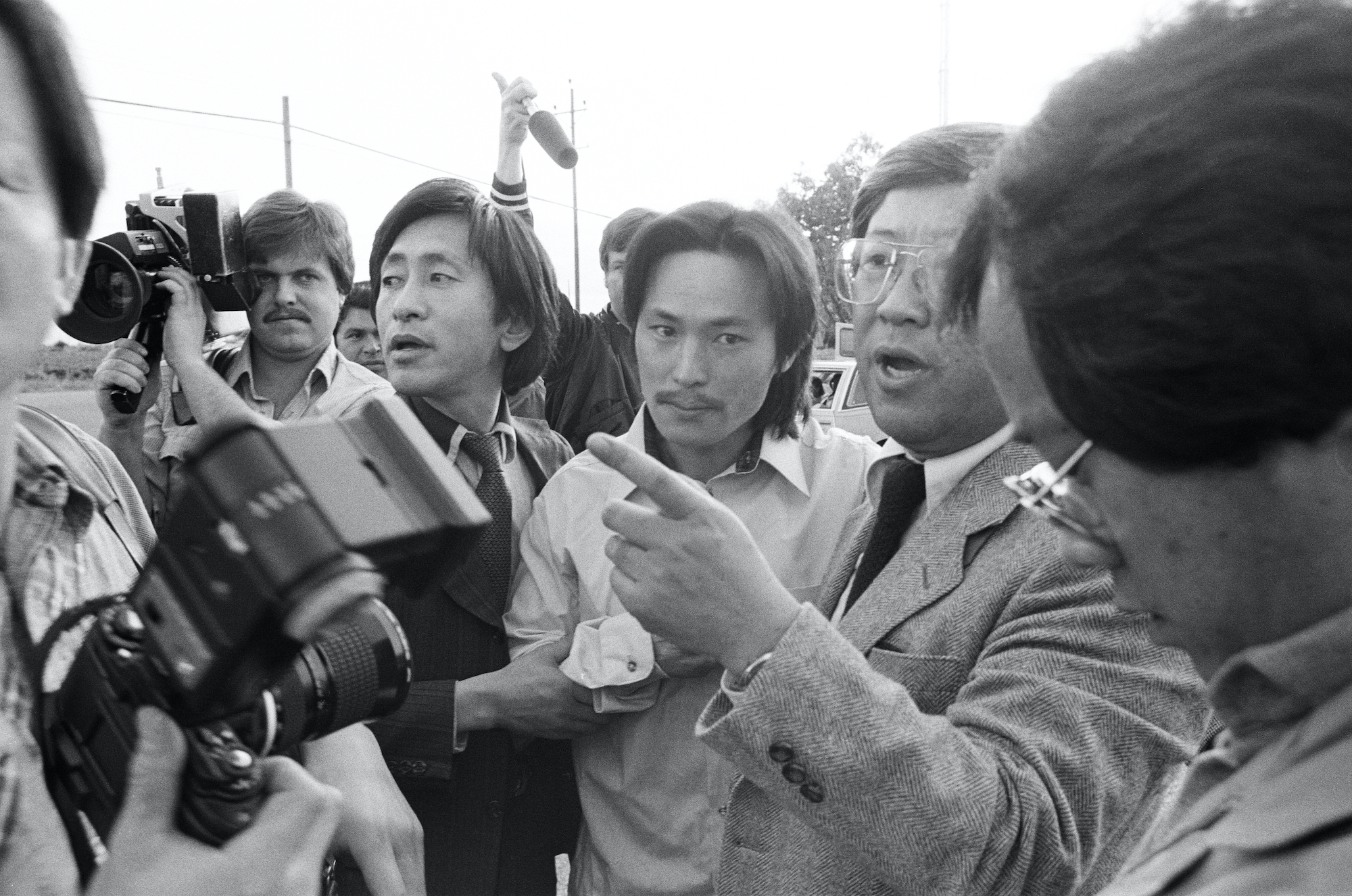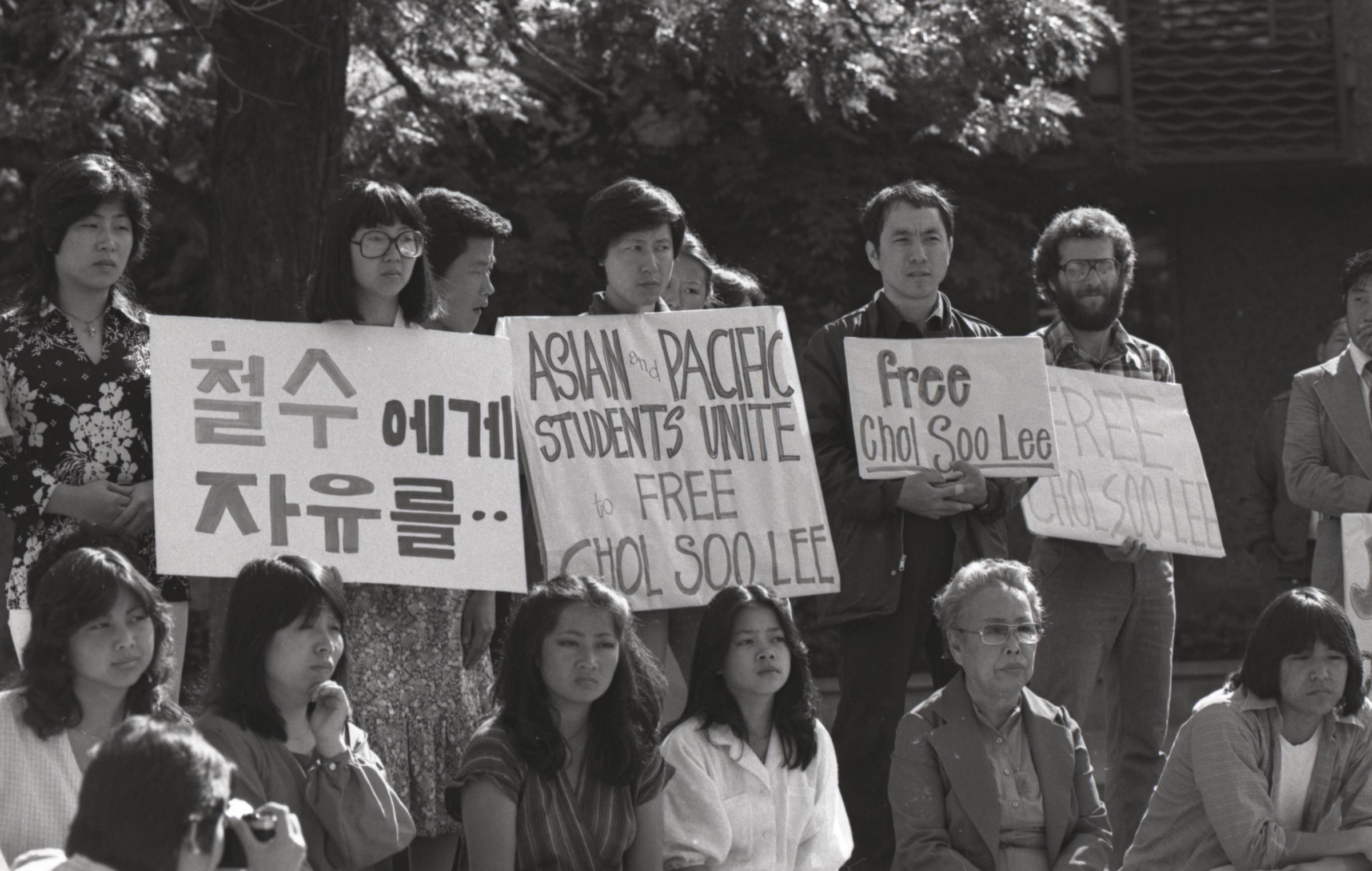
Social justice activism in the Asian American community today owes much of its legacy to the pivotal but relatively unknown story of Chol Soo Lee, a Korean American immigrant whose wrongful conviction for a 1973 gang murder in San Francisco galvanized a wide range of Asian Americans, who united to exonerate him—and made history in the process.
Lee’s heartbreaking, remarkable, and undeniably complex story is the subject of Free Chol Soo Lee, a documentary by journalists and filmmakers Julie Ha and Eugene Yi that draws its name from the rallying cry of the Pan-Asian grassroots organizers that fought for his freedom. The film, which releases in theaters on August 12, delves into Lee’s life and how he became the face of a movement that confronted some of America’s most shameful ills, including racial violence and mass incarceration—issues that have been part of a long history of violence towards Asians in America and that are still disarmingly relevant today, as racist attacks and hate incidents towards Asian Americans have been on the rise since the beginning of the pandemic.
After being racially profiled and wrongfully accused, arrested, and convicted for the murder of a local gang leader in San Francisco’s Chinatown, Lee was sentenced to life in prison. While serving his sentence, Lee was involved in a prison yard altercation where he killed a fellow inmate. While Lee claimed self-defense, he received another murder conviction and was sentenced to death. In 1978, four years into Lee’s imprisonment, an investigative report into the gang murder by Korean-American investigative journalist K.W. Lee shed new light on the case, prompting the formation of a pan-Asian defense committee and a national coalition of rising Asian American activists who helped secure a new trial and eventual exoneration for Lee.
Read More: Violence Against Asian Americans Is on the Rise—But It’s Part of a Long History

For Ha, who first learned of Lee’s story at the age of 18 while being mentored by K.W. Lee, making the film was a way to bear witness to Lee’s resilience and to reflect an important aspect of Asian American history that could easily go forgotten.
While the 1982 murder of Vincent Chin is often pointed to as one of the seminal cases in helping to form the Asian American identity as we now know it, Lee’s case predated it by several years and many of the activists who were part of the Free Chol Soo Lee movement went on to organize around the Chin case, with Lee himself speaking out at rallies for justice for Chin. As for why Lee’s story is far less widely known than Chin’s is complicated—while both were central to Asian American history, Chin’s case, with its clear moral lines, could be seen as easier to digest than Lee’s, which involved criminal charges, incarceration, and later struggles with addiction and re-entry into society.
“There was no fairytale ending to Chol Soo’s story,” Ha told TIME. “There was this tremendous, victory of overturning two murder convictions to free this man from prison thanks to his landmark movement, but then upon his reentry, he stumbled so much. But this story must be known because we need to understand the full truth of our history and we need to embrace the truth and all its messiness.”
Read More: 11 Moments From Asian American History That You Should Know
For Yi, Lee’s story offers a chance to interrogate how we value history and legacy, allowing a look at whose stories are told and whose are forgotten.
“What do we expect of our heroes and our symbols for these movements? Do we need them to be perfect people? Because Chol Soo was not a perfect person, but who among us is?,” says Yi. “By telling the story the way we did, we’re happy to say that this is not just a celebration of the resistance and that moment in time but of Chol Soo’s resilience as well.”
Here’s what to know about Chol Soo Lee, his wrongful murder conviction, and the movement that secured his freedom.

Who was Chol Soo Lee?
Chol Soo Lee was a Korean immigrant living in San Francisco who became the face of a social justice movement that united Asian Americans after he was wrongfully convicted in a murder case. Born in South Korea in 1952, Lee spent his early childhood under the care of his aunt and uncle after his mother moved to the U.S. as a military bride. He later joined her at her home in San Francisco in 1964 at the age of 12, but had trouble adjusting to life in the U.S. Lee’s struggles at home, where his mother is alleged to have physically and emotionally abused him, and in school, where he was bullied, resulted in him being sent to juvenile hall and later a public mental institution, where he was incorrectly diagnosed with schizophrenia. In the film, friends of Lee’s noted that he was often the only Korean in the close-knit Chinese community of San Francisco’s Chinatown where he lived and worked.
What to know about his wrongful murder conviction
In 1973, when Lee was 21 years old, he was arrested for the murder of Yip Yee Tak, a Chinese American man, a member of a local Chinese gang who had been shot to death in broad daylight on a busy street corner in San Francisco’s Chinatown. Lee, who had recently been written up for accidentally discharging a firearm, was wrongfully convicted of the murder based on the eyewitness testimony of three white tourists, even though he did not match the description of the killer. The racism of the case was inherent from the start; although Lee was Korean, not Chinese, he was profiled as a suspect by white police officers because he was Asian, playing into the perpetual foreigner trope. Investigators also did not interview any members of the local Chinese community, even though the a murder took place in Chinatown.
Lee was convicted of first degree murder in 1974 and sentenced to life in prison at Deuel Vocational Institution in Tracy, California. A few years later, in 1977, he was involved in a prison yard altercation that ended with him killing a fellow inmate, a white supremacist named Morrison Needham. While Lee claimed it was an act of self-defense because Needham threatened to stab him, he was convicted again for first degree murder and sent to death row at San Quentin State Prison.

How the Free Chol Soo Lee movement helped create the Asian American community as we know it today
In 1978, Korean American journalist Kyung Won “K.W.” Lee wrote a two-part investigative report on Chol Soo Lee’s trial for the Chinatown murder, revealing the various missteps and failings of the investigation, which included the withholding of exculpatory evidence. The report was damning and sparked a mobilization across many Asian American groups throughout the country. A pan-Asian defense committee and a national coalition of Asian American activists formed, while a national and global network of supporters that ranged from radical student activists to church members to allies overseas in South Korea and other Asian countries rallied for justice for Lee. While this mobilization was noteworthy, the solidarity found between such diverse groups was remarkable in and of itself, says Yi.
Read More: In 1968, These Activists Coined the Term ‘Asian American’—And Helped Shape Decades of Advocacy
“It wasn’t expected that Asian Americans from different countries and different generations would come together like this,” he said. “These solidarities that formed were very unexpected because of the histories in Asia, like the Japanese and Koreans. Many of the immigrants who came to Chol Soo’s aid lived through war as well, so there wasn’t a lot there that would necessarily make them natural allies for third generation Japanese and Chinese American radical activists who were raised on the Black Panthers and inspired by the Civil Rights Movement. But yet they found common cause and were able to work past the differences to achieve this miraculous victory to get him out.”
The movement to Free Chol Soo Lee resulted in funds being raised to hire attorney Leonard Weinglass, who defended the “Chicago 7”, and later, civil rights attorney Tony Serra, whose flamboyant persona was recreated in a 1989 film loosely based on Lee’s trial, True Believer. In 1978, Lee filed a petition for a writ of habeas corpus, a legal action that protects incarcerated people from unlawful confinement, with a hearing held the same year and granted in 1979. In 1982, a retrial of the Chinatown murder was held and Lee was acquitted of the murder of Tak. In 1983, Lee’s death sentence for killing Needham was nullified. After serving nearly a decade in prison, Lee was released on bail in March 1983.
What to know about his acquittal and life after prison
While Lee was a high-profile figure upon his release from prison, he struggled with his re-entry into society, often unemployed and battling addiction. His challenges led him to less than savory pursuits, including burning down a house as part of a gang hit in 1991. The arson job went awry, leaving Lee with severe burns on his body and face. He later began doing speaking engagements at schools and youth centers about the value of community and the consequences of crime and mass incarceration. In his later years, he wrote a draft of an autobiography of his life entitled, Freedom Without Justice, which was finished and published posthumously by UC Davis professor, Richard S. Kim. Lee passed away in 2014 from complications from a gastric disorder.
For Ha, telling the story of Chol Soo Lee with this documentary was not only a way to shine a light on a forgotten part of Asian American history and its legacy of activism and resistance, but also a way to address issues for the Asian American community that aren’t often centered, like mass incarceration and the history of racial violence towards Asian people in America. “When you when you hear about incarceration, when you hear about criminal justice reform, when you hear about the importance of re-entry and recidivism, those are our issues, too,” she says. “There’s been a long history of racism that goes well beyond microaggressions.”
More Must-Reads from TIME
- Cybersecurity Experts Are Sounding the Alarm on DOGE
- Meet the 2025 Women of the Year
- The Harsh Truth About Disability Inclusion
- Why Do More Young Adults Have Cancer?
- Colman Domingo Leads With Radical Love
- How to Get Better at Doing Things Alone
- Michelle Zauner Stares Down the Darkness
Write to Cady Lang at cady.lang@timemagazine.com